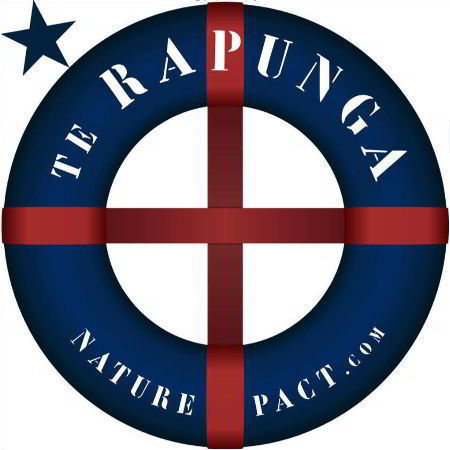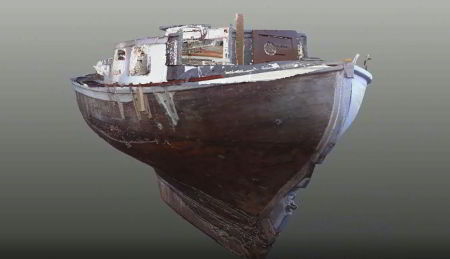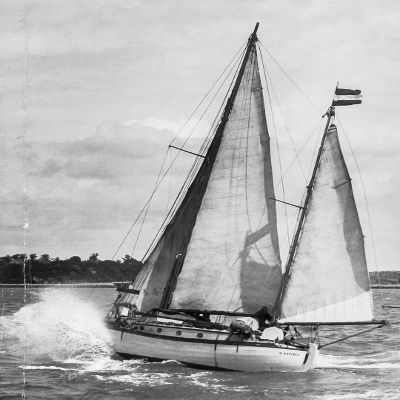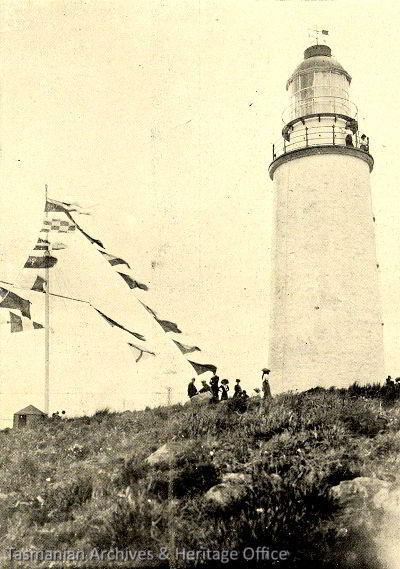
Cape Bruny Light keepers have been doing battle with nature since 1838.
In a convict hewn stone tower at the southern end of Bruny Island high on a cliff, 103m above sea level, the keepers carried out a nightly vigil. Tending the light to ensure that maritime travellers did not meet the same grisly end as so many before them had done, it was an arduous and unrelenting life.
As the light burned continuously through the night, it fell to the light keeper to be assiduous and regular in his nocturnal tasks. The original 1838 Wilkins lantern contained fifteen lamps and used almost half a litre of sperm whale oil for every hour of use; ensuring constant refilling and trimming of wicks, time was also taken replacing the fragile chimneys on the lamps and the polishing of lamps and brass work. In addition, the clockwork mechanism that provided the unique light characteristic of each lighthouse, needed to be rewound every eight hours.
Provisions arrived by sea, with both sail and steam vessels transporting stores and supplies to Jetty Beach on Great Taylors Bay, from there they were conveyed by Bullock and Dray for a further three miles to the lighthouse. After 1915 the stores arrived by supply ships commissioned by the Hobart Marine Board this continued until 1962 when the current road from Little Taylors Bay was constructed.
“A glorious, view we had from the top of the lighthouse, a strong breeze blowing in from the S.W., and Southport and Recherche, with all the reefs breaking away to the right. The weather was too hazy to see Pedro Blanca, but the Friars and other rocks stood out prominently, with the white surf breaking furiously all round.”
The first keeper was William C. Baudinet who, along with three convicts and a bullock called Merryweather, manned the light from 1838-1841. A succession of keepers followed, but by 1877 Captain William John Hawkins, a master mariner by trade, had taken the role of Superintendent of South Bruny Lighthouse.
Hawkins was to be the longest serving Light keeper, for 38 years he kept watch. According to Hawkins’ reminiscences “ Life as a Shellback”; at the age of 13 he bound himself as an apprentice to the sea for the princely sum of 30 Pounds. He arrived in Hobart in 1864 and married Lydia in St David’s Cathedral. They had at least three children the descendants of whom still live on Bruny.
Hawkins was superintendent during major changes to the lighthouse; in 1902 the installation of the telephone revolutionised communications with Hobart, and in 1903, the fitting of a new lighting system along with internal modifications including the wrought iron spiral stair case was completed.
The Marine Board made annual inspections and often bought a party of guests with them. In December 1912, His Excellency the Governor, the Lord Mayor, members of the Marine Board along with a party of visitors comprising of other government officials and their wives and citizens made the trip south on the SS Dover .
“The steamer left the wharf at 7.45 am, and at 11.15 arrived at the lighthouse Jetty in, Great Taylors Bay, where the party was met by Mr Hawkins, the veteran lighthouse superintendent, who has spent the last 36 years at the same station On arrival at the station the usual inspection was made, and everything found to be satisfactory, after which all adjourned to the superintendent's quarters, where Mrs Hawkins provided an acceptable cup of tea and light refreshments. His Excellency, in the course of his tour of the quarters, spoke kindly words of encouragement to the children.”
The lighthouse was designed by the colonial architect John Lee Archer and constructed by Charles Watson with a team of 12 convicts, from locally quarried stone. Watson himself a convict, had received a condition pardon in 1834. In 1836 he was sent to South Bruny to supervise the building of Australia’s third lighthouse. The construction was completed in 1838 and remained operational until 1996. Today the light at Cape Bruny remains Tasmania’s second oldest lighthouse and the longest continually manned.
If you would like to visit the Lighthouse, Craig Parsey of Bruny Island Safaris runs regular tours to the Cape Bruny Lighthouse. Craig is the son of one Bruny’s last Light Keepers.
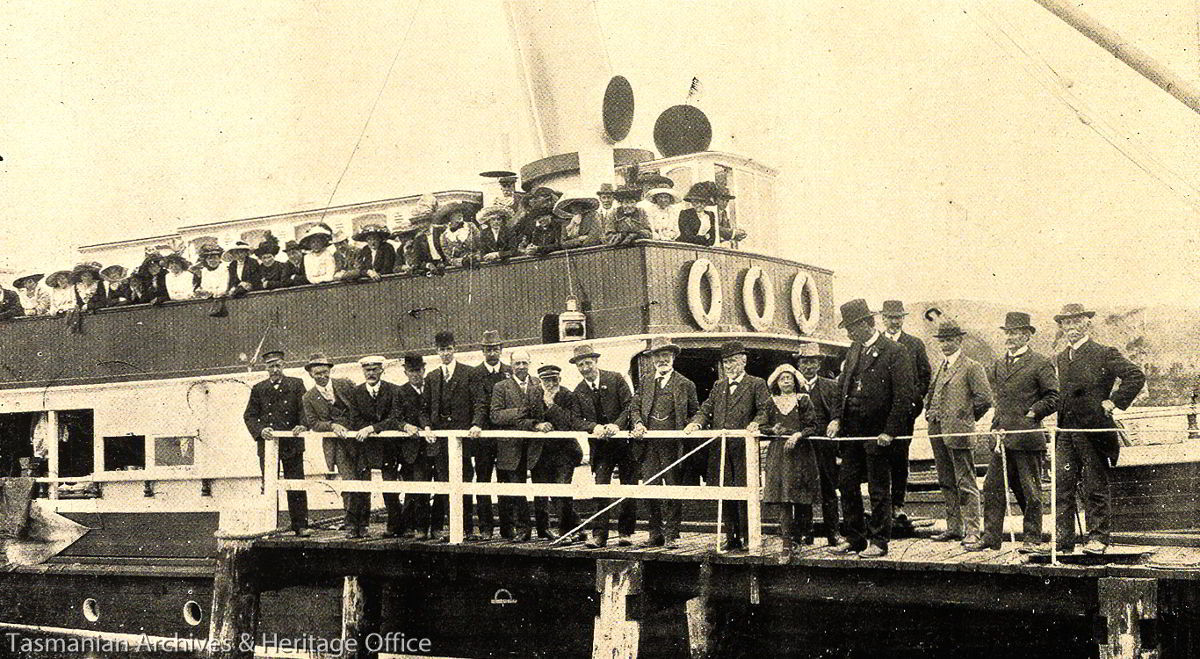
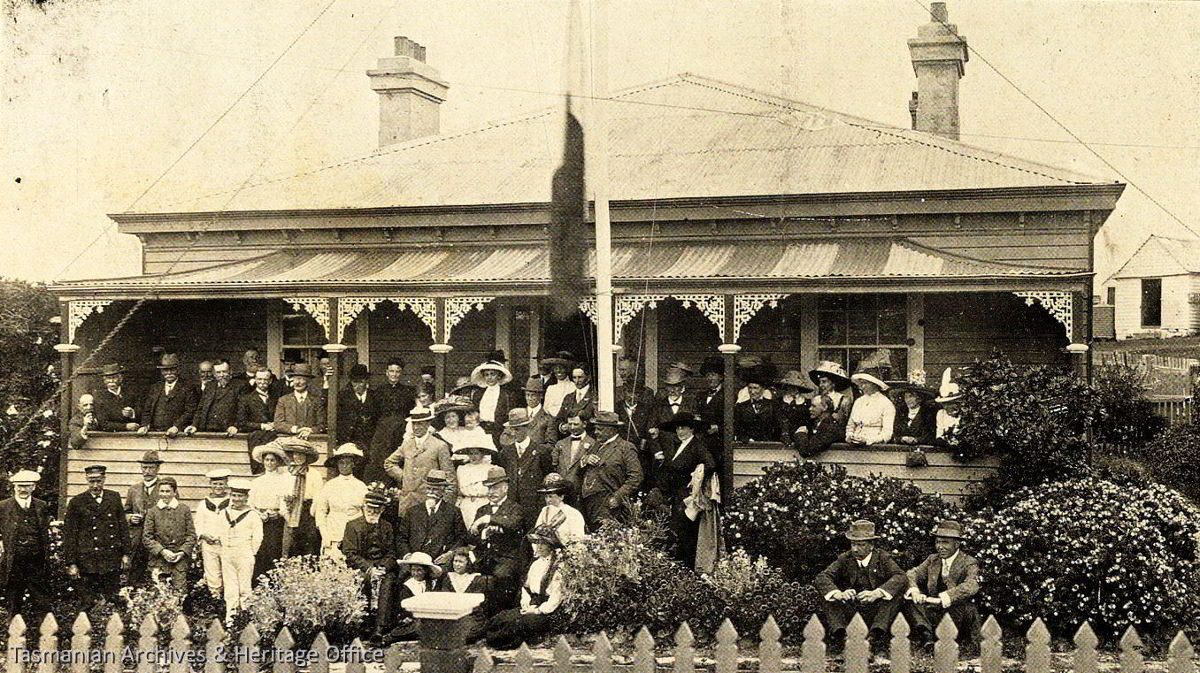
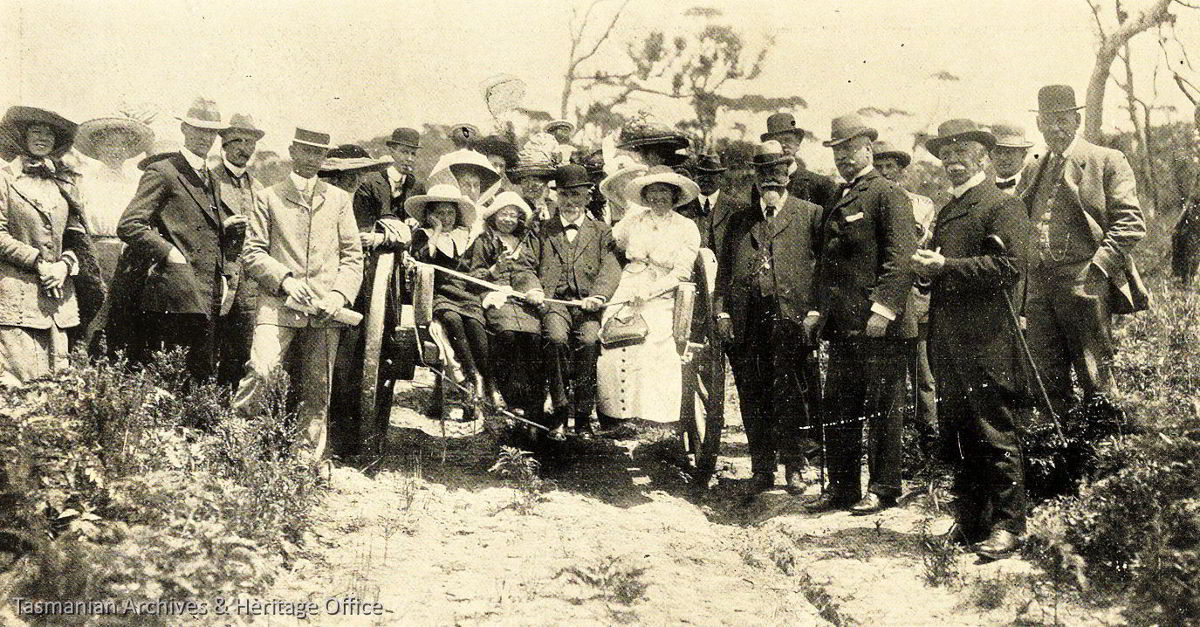
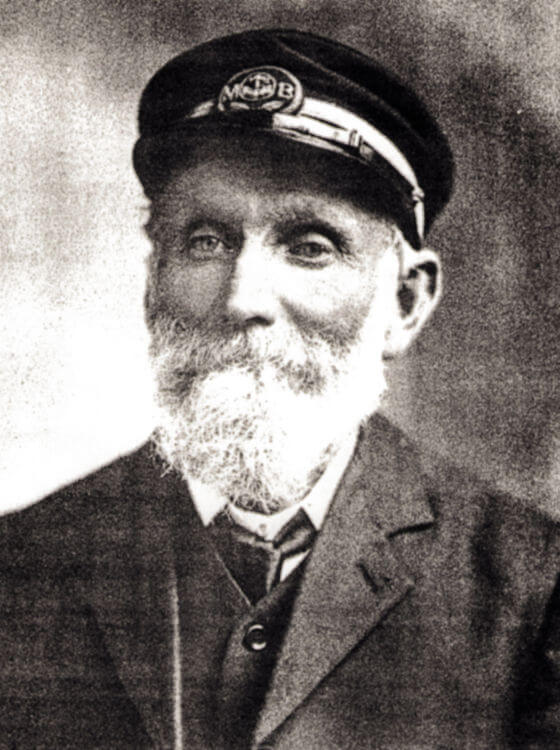
Source: Bruny Island Historical Society
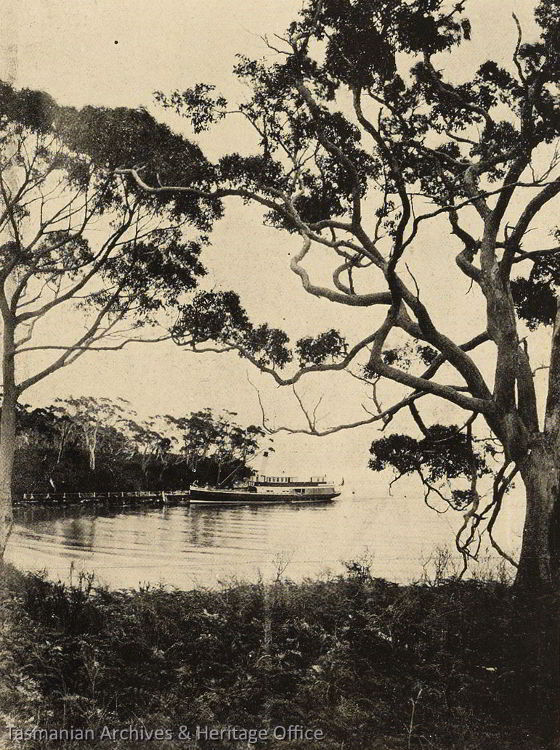
Resource for Inspection Bruny Island Light House
Linc Tasmania Tasmanian archives and Heritage
Hobart : Davies Brothers Limited, 1877-1921.
The Tasmanian mail December 12,1912 Pg 22,23
Inspection South Bruny Lighthouse
Printed Tasmanian Mail Dec 12, 1912
Resource for William Hawkins
Bruny island Historical Society
Title : William Hawkins [Photo]
More Bruny Island Journal
Te Rapunga at the Wooden Boat Festival, Hobart
Erika Grundmann, author of Dark Sun, and Tracy Thomas from Bruny Island Coastal Retreats, appear on ABC Radio Hobart to talk about the restoration of Te Rapunga and the Wooden Boat Festival in Hobart.
Use of CAD technology for the restoration of Te Rapunga
This video shows how CAD technology is being used for the restoration of Te Rapunga.
Wanderlust, George Dibbern and the Voyage of Te Rapunga
In 1930 a small wooden boat set sail for unknown adventures. This might not in itself be remarkable; however, this was a journey that was eventually to lead from Kiel in Germany to Bruny Island, Tasmania.
Lizzie Stokely shares her love of Cloudy Bay
Bruny's favourite daughter and Bruny Island Coastal Retreats ambassador, Lizzie Stokely, shares what she holds dear.
